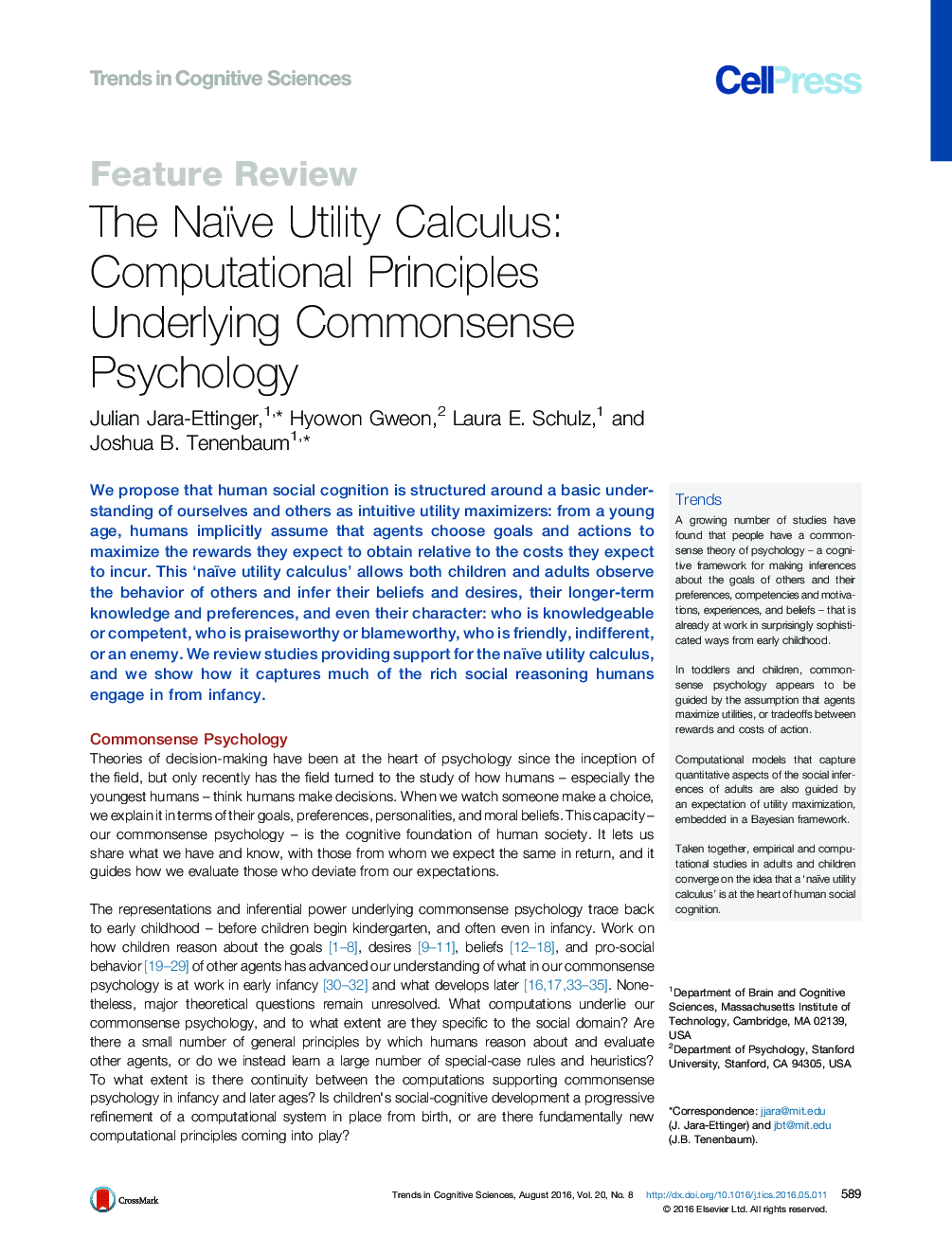| کد مقاله | کد نشریه | سال انتشار | مقاله انگلیسی | نسخه تمام متن |
|---|---|---|---|---|
| 141334 | 162856 | 2016 | 16 صفحه PDF | دانلود رایگان |
We propose that human social cognition is structured around a basic understanding of ourselves and others as intuitive utility maximizers: from a young age, humans implicitly assume that agents choose goals and actions to maximize the rewards they expect to obtain relative to the costs they expect to incur. This ‘naïve utility calculus’ allows both children and adults observe the behavior of others and infer their beliefs and desires, their longer-term knowledge and preferences, and even their character: who is knowledgeable or competent, who is praiseworthy or blameworthy, who is friendly, indifferent, or an enemy. We review studies providing support for the naïve utility calculus, and we show how it captures much of the rich social reasoning humans engage in from infancy.
TrendsA growing number of studies have found that people have a commonsense theory of psychology – a cognitive framework for making inferences about the goals of others and their preferences, competencies and motivations, experiences, and beliefs – that is already at work in surprisingly sophisticated ways from early childhood.In toddlers and children, commonsense psychology appears to be guided by the assumption that agents maximize utilities, or tradeoffs between rewards and costs of action.Computational models that capture quantitative aspects of the social inferences of adults are also guided by an expectation of utility maximization, embedded in a Bayesian framework.Taken together, empirical and computational studies in adults and children converge on the idea that a ‘naïve utility calculus’ is at the heart of human social cognition.
Journal: - Volume 20, Issue 8, August 2016, Pages 589–604
